© 2025 MJH Life Sciences™ , Patient Care Online – Primary Care News and Clinical Resources. All rights reserved.
Heart Failure Milestones in Management: 9 Studies Making a Difference in 2021
SGLT-2 inhibitors have proven effective in disease modification as well as symptom improvement across HF phenotypes and severity. Get a quick summary of the research.
Sodium-glucose cotransporter-2 (SGLT-2) inhibitors have proven effective in disease modification and symptom improvement across heart failure (HF) phenotypes and severity with results of recent landmark clinical trials laying groundwork for FDA approval and updates to clinical practice guidelines.
Other findings released in 2021 shed light on factors that both worsen and improve HF-associated morbidity and mortality. Highlights of 9 notable studies follow in the slide show below.
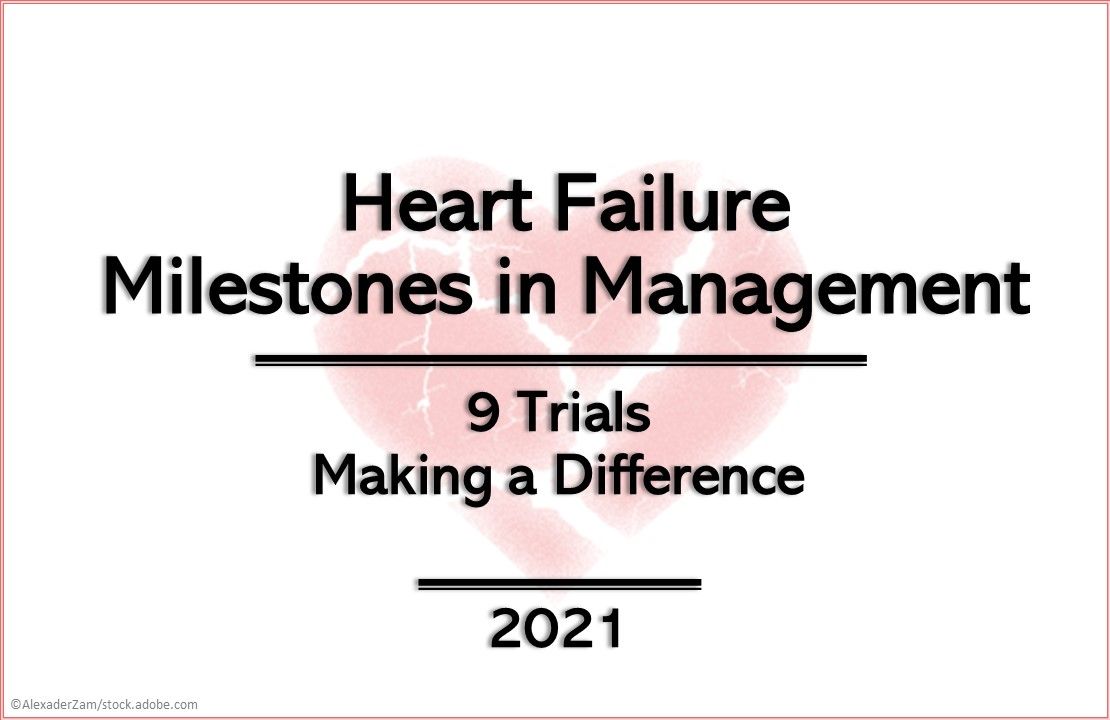
HFpEF, heart failure with preserved ejection fraction; HFrEF, heart failure with reduced ejection fraction;
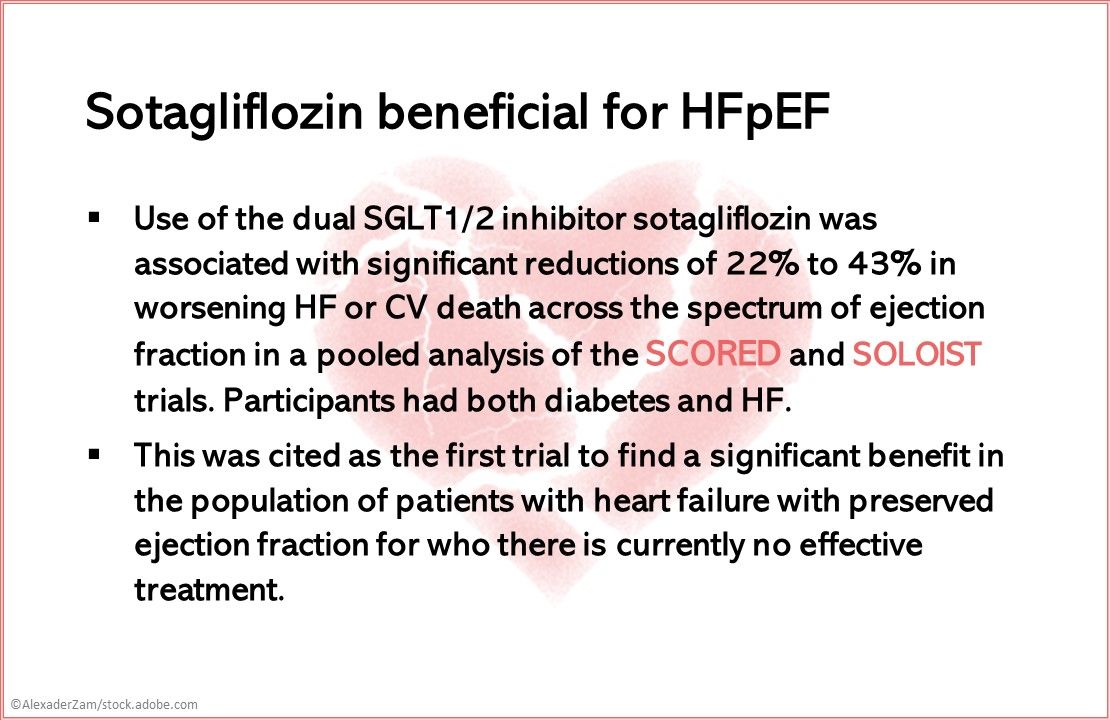
Sotagliflozin beneficial for HFpEF. Use of the dual SGLT1/2 inhibitor sotagliflozin was associated with significant reductions in worsening HF and cardiovascular (CV) death across the spectrum of ejection fraction in a pooled analysis of the SCORED and SOLOIST trials. This was cited as the first trial to find a significant benefit in the population of patients with heart failure with preserved ejection fraction. Results were presented at the American College of Cardiology Scientific Sessions 2021.
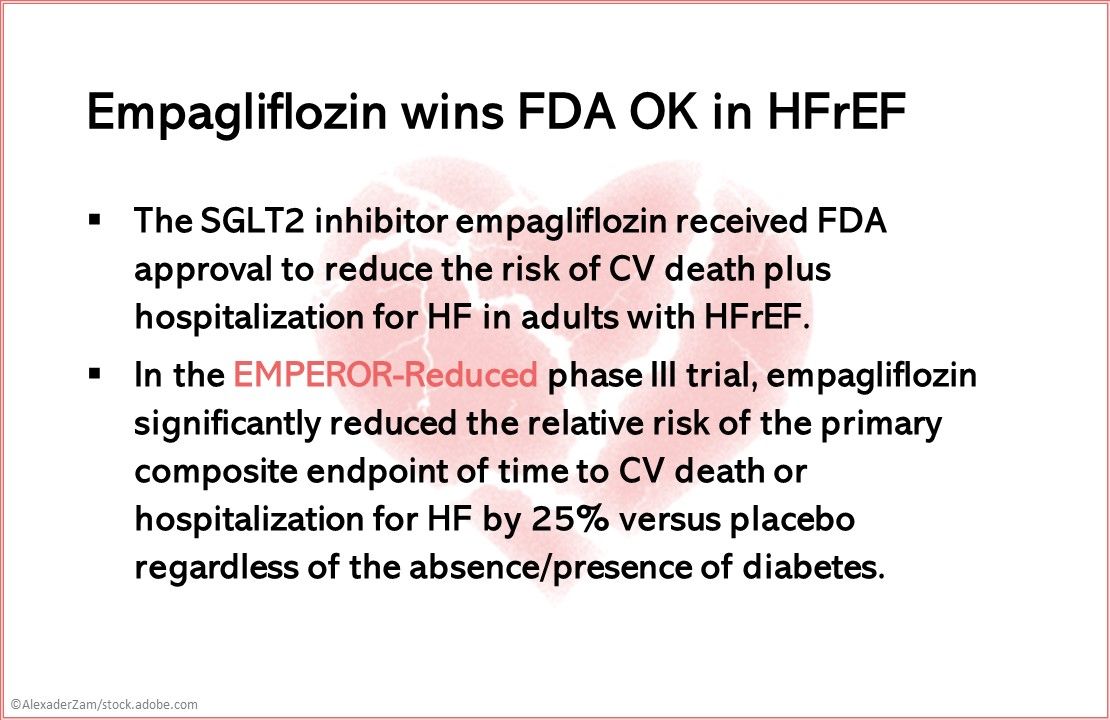
Empagliflozin wins FDA OK in HFrEF. The SGLT2 inhibitor empagliflozin received FDA approval to reduce the risk of CV death plus hospitalization for HF in adults with HFrEF. In the EMPEROR-Reduced phase III trial, empagliflozin significantly reduced the relative risk of the primary composite endpoint of time to CV death or hospitalization for HF by 25% versus placebo. New England Journal of Medicine.

Dapagliflozin ameliorates symptoms, limitations in HFpEF. Significant improvements were seen in symptoms and physical limitations in patients with HFrEF with the SGLT-2 inhibitor dapagliflozin in the PRESERVED-HF trial. Specifically, treatment resulted in improvements in HF limitations measured by the Kansas City Cardiomyopathy Questionnaire clinical summary score and in exercise function as measured by 6-minute walking distance. PRESERVED-HF

Hemodynamic-guided management shows potential in GUIDE-HF. In the recent GUIDE-HF trial, hemodynamic-guided management of HF using remote pulmonary artery pressure monitoring did not result in a reduction in the cumulative incidence of HF events in the overall analysis. The study did find a potential benefit on all-cause mortality and total HF events, possibly driven by lower HF hospitalization rates, before the COVID-19 pandemic. Lancet.
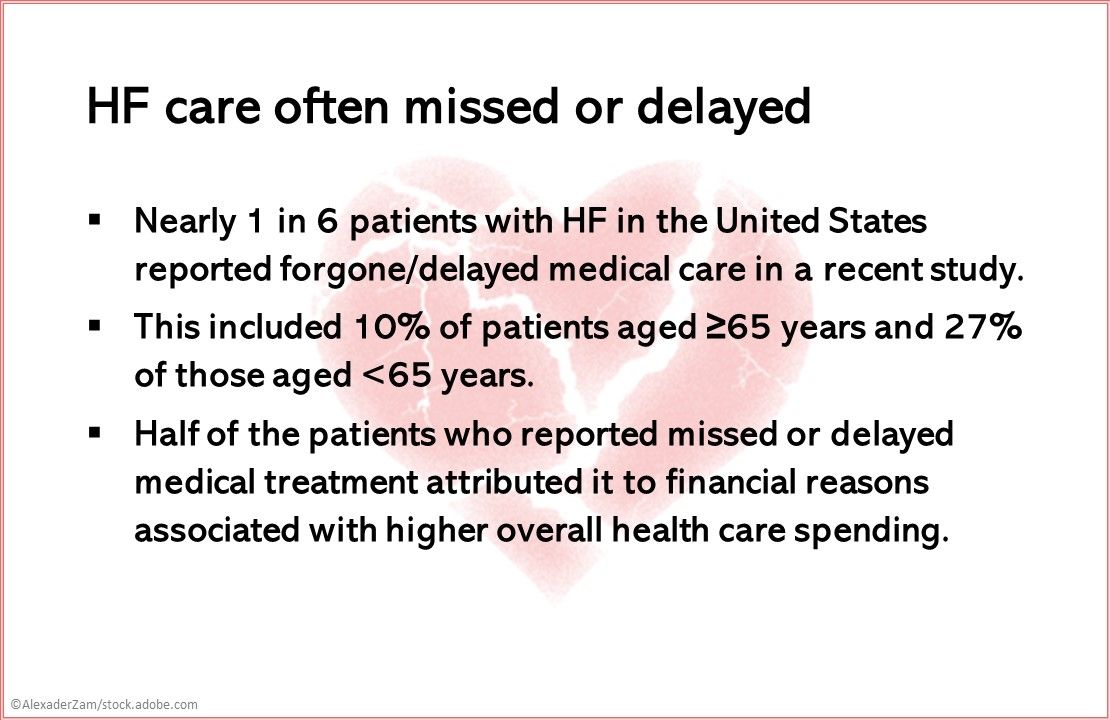
HF care often missed or delayed. Among patients with HF in the United States, nearly 1 in 6 reported forgone/delayed medical care. This included 10% of patients aged ≥65 years and 27% of those aged <65 years. Half of the patients who reported missed or delayed medical treatment attributed it to financial reasons associated with higher overall health care spending. JACC: Heart Failure.
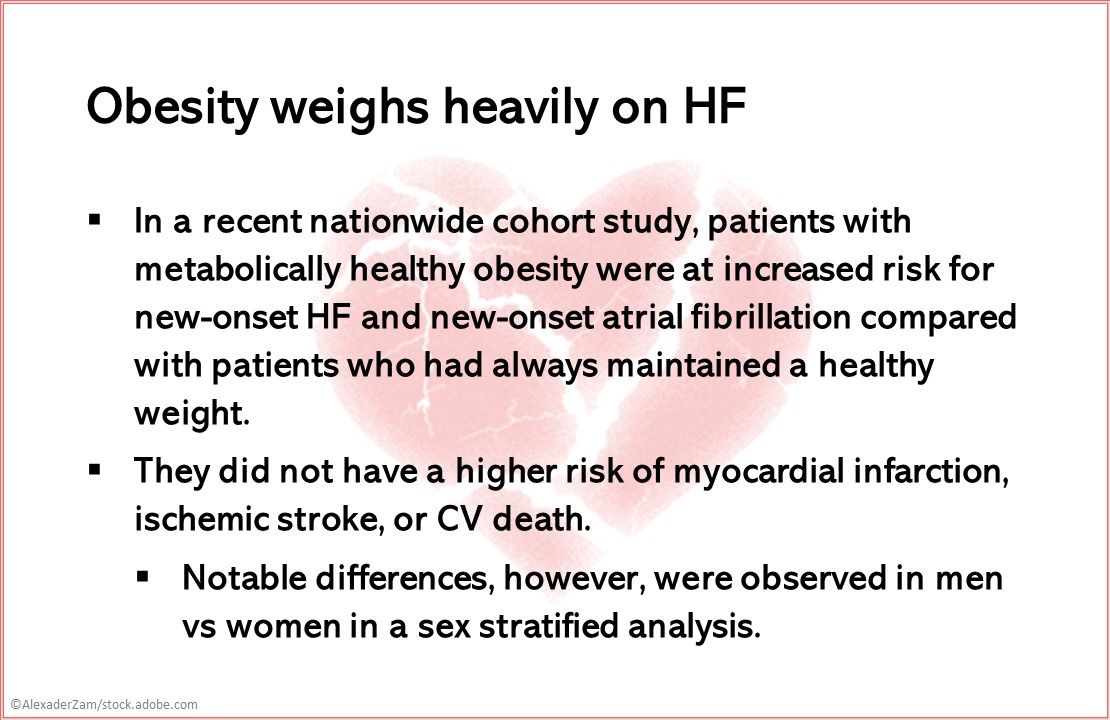
Obesity weighs heavily on HF. In a recent analysis, patients with metabolically healthy obesity were at increased risk for new-onset HF and new-onset atrial fibrillation compared with patients who had always maintained a healthy weight. They did not have a higher risk of myocardial infarction, ischemic stroke, or CV death. Notable differences, however, were observed in men vs women in a sex stratified analysis. Diabetes, Obesity and Metabolism.
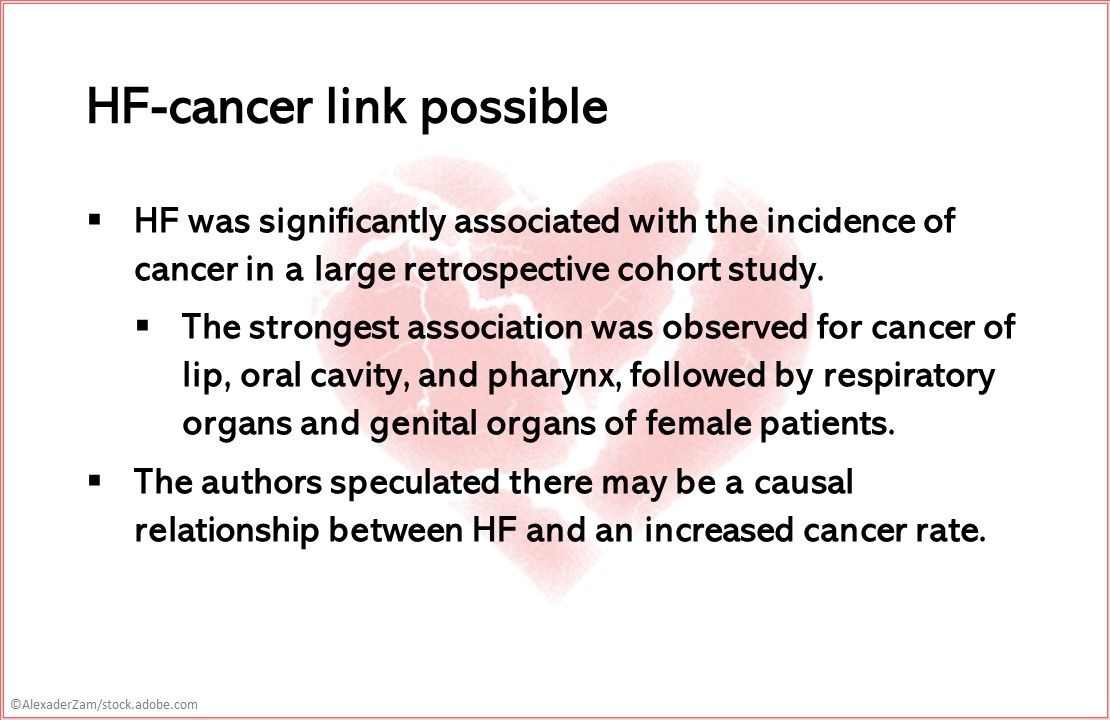
HF-cancer link possible. HF was significantly associated with the incidence of cancer in a large retrospective cohort study. The strongest association was observed for cancer of lip, oral cavity, and pharynx, followed by respiratory organs and genital organs of female patients. The authors speculated there may be a causal relationship between HF and an increased cancer rate. ESC Heart Failure.
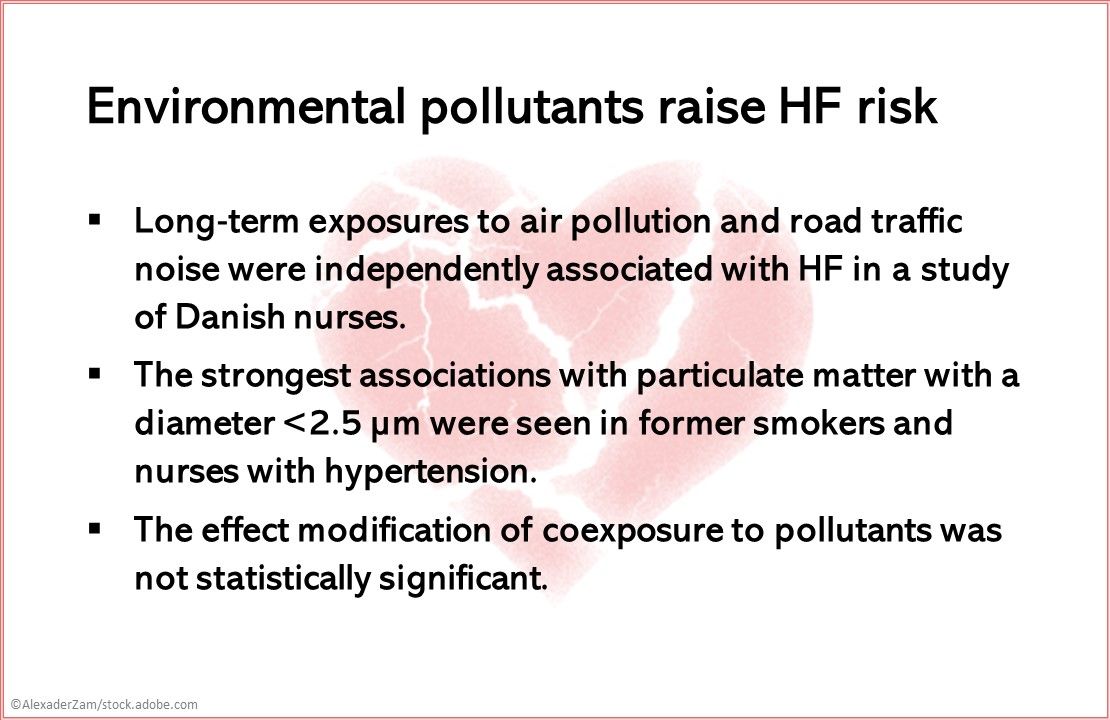
Environmental pollutants raise HF risk. Long‐term exposures to air pollution and road traffic noise were independently associated with HF in a study of Danish nurses. The effect modification of coexposure to pollutants was not statistically significant. The strongest associations with particulate matter with a diameter <2.5 µm were seen in former smokers and nurses with hypertension. Journal of the American Heart Association.
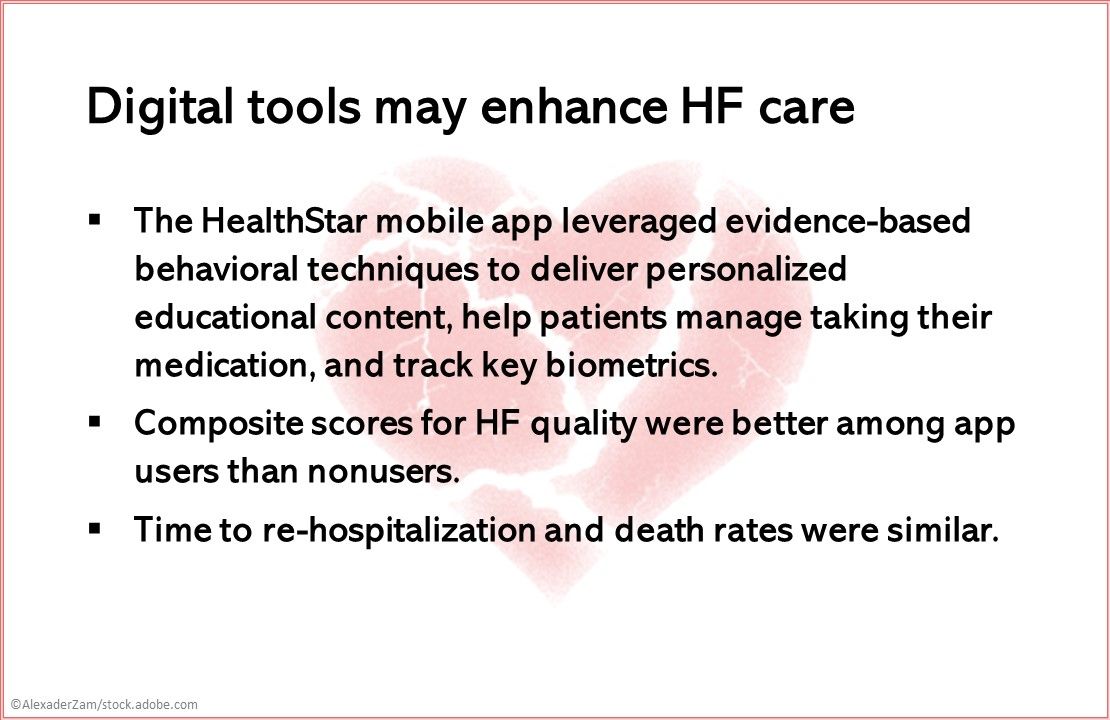
Digital tools may enhance HF self-care. The use of digital tools for patients with HF may improve their self-care. The HealthStar mobile app leveraged evidence-based behavioral techniques to deliver personalized educational content, help patients manage taking their medication, and track key biometrics. Composite scores for HF quality were better among app users than nonusers. Time to re-hospitalization and death rates were similar. Duke Clinical Research Institute.
Related Content:


